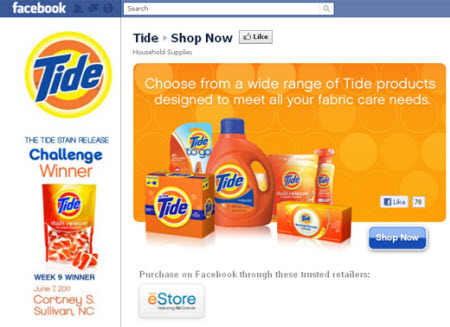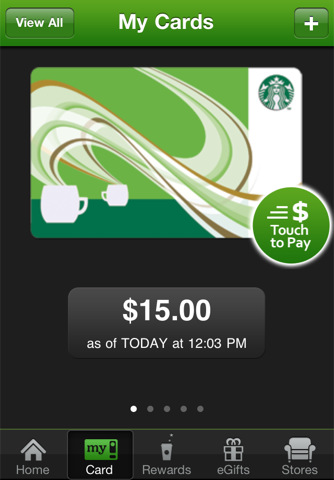Internet is becoming a more and more popular space for promoting products and building strong ties with target consumer groups. Brands know it, and people know that brands know it and they do not mind to be part of this ‘game.’ On the contrary, users are actively getting engaged into the digital activity of the global companies and easily adopt new ways of communicating with brands and enrich their experience as iConsumers. Why is it so important for brands, how can they benefit from it and what ways do they choose to get people connecting with them online? This is the theme of our today’s review.
Click to enlarge
According to the new McKinsey & Company research ‘The World Gone Digital’, people are now using digital devices and platforms more often than before—a survey, conducted among US residents aged 13-64, revealed that «nearly 50 percent of US online consumers are now advanced users of smartphones, social networks, and other emerging tools—up from 32 percent in 2008.» The consulting company determined seven categories of Internet users according to how deep they are involved in the digital experience—as it turns out, there are 19 percent of ‘digital junkies’ (people, mostly young men, who adopt new technologies fast), 16 percent of ‘digital communicators’ (mostly young women, who spend much time on their favourite social media websites, 3.2 times more relative to survey average) and 14 percent of ‘video digerati’ (those who view 2.6 times more videos across all platforms as compared to the average index). In addition to this, people in the U.S. are now spending less time on games and checking emails than they used to do two years ago. In other countries the attitude to digital life is quite the same—people are spending much time on the Internet, but companies, while being quite open to this change, sometimes do not that easily adopt new approaches. Another research, conducted by KPMG Australia, reveals that businesses in the country do not use social media like companies in Europe or America, and lose quite a lot. “Compared with other countries, Australian businesses are not capitalizing on this on-line ‘buzz’ to listen to what their customers are saying, or to sell their products and services. Given Australians are one of the highest users of social media networks in the world, our businesses have a huge advantage in being able to leverage this channel for a business benefit, but at the moment, they are lagging behind,” commented Malcolm Alder, National Managing Partner for KPMG’s Digital Economy practice. Australian businesses really should change their mind as soon as possible, since social media seem to be the first place to where businesses should go in our days to win consumers’ attention.
Today, the cooler you are, the more fans, subscribers and followers you have and vice versa (thus, you can become quite popular by inviting more people to your social media page, using various methods, and launch next campaigns with support from your fans). The most popular social media channel today is Facebook—the fan pages there serve as both a place to get to know consumers closer and inform them on something important related to brands’ activity (starting from new campaigns to announcing discounts) or even selling merchandise. One of the companies, which turn their fan pages into little online shop, is Procter & Gamble, which is selling a range of its products via this platform and Heineken to name but a few. For the current moment, the most popular retail brand on Facebook is Coca-Cola (with over 33 million fans), but this page is used only for communicating with consumers and sharing news, and there are no remarkable attempts to capitalize on the popularity in a direct way. Even when brands are not offering their products straight from the page, they are generating buzz around it, by encouraging users discuss the products, and so create environment, in which a consumer gets emotionally closer to the product. Facebook also suggested an advertising that is ‘initiated’ by a user—it’s when her or she writes a message, connected with some business in some way, stories about their activity pop-up in their friend’s news feed as ‘sponsored stories’. So, users generate advertising by just mentioning a brand. This comes as addition to traditional discussions and sharing links. While now FB seems to be the major social media destination, the situation may change soon since Google+ is also stepping into this zone—so far, the new platform has 25 million registered users, but Google is asking brands to sit tight and wait—obviously plotting something really huge for fall.

Social networking in brands’ reality is nothing new, but there’s still a plenty of opportunities for businesses in this area. Just like it is with smartphones, which are also not an original, but quite an effective way of keeping in touch with a consumer. Smartphones are quietly taking the lead, becoming the device of choice for web browsing, checking emails and even shopping. “More than 60 percent of smartphone users would consider buying goods with it or have already done so. Over the past two years, iPhone users have spent 45 percent more time e-mailing on their smartphones and 15 percent less time e-mailing on their PCs,” says the research. To reach more people, brands release smart and fun apps, which both entertain and invite a consumer to take a look at the product range. One of the recent apps, which captured our attention, is adidas Originals application, which uses 3D-recogniztion, to help people choose the best change for their old shoes. Starbucks, which has recently revamped its online store, is also one of the brands, which offer its consumers new and convenient ways to shop at the retailer’s venues: recently it has launched an updated version of its iPhone apps, adding the eGift feature, and introduced mobile payment last year. Some companies use smartphone apps for educating their consumers: for example, Nestlé has created an application, which helps consumers sort used packaging in the most sustainable way.

Along with reading news and articles, people also watch a lot of videos on the Internet, and considering the fact that online versions of newspapers are getting more popular than the book format, and e-books are replacing the traditional publications, very soon web-based video will substitute TV as well. According to the survey, TVs are becoming more and more of yesterday with 69 percent of respondents preferring to watch videos on their PCs and 33 percent do view them on smartphones. With this, 24 percent of people use their TVs for watching web-content, and this is three times more than two years ago, and moreover, only a quarter of people who still watch TV say they are satisfied with pay-TV services, meaning that the companies which offer this kind of experience should start providing their product across mobile devices. In fact, Google is actively taking the lead and has a bunch of its own offerings, which work just like TV, or use TV as platform for broadcasting its content. The Internet giant provides its users with an opportunity to watch events live at www.youtube.com/live or broadcast popular films and movies—in May, the company announced it added 3,000 movie titles for rental in the USA. But it doesn’t mean that Google wants to destroy television, on the contrary, it wants to collaborate with the industry—on August 26, Google’s chairman Eric Schmidt will give a lecture to an audience of television executives in Edinburgh, in which he will emphasize that the company really needs television. In early summer, it was announced that Google is allegedly planning to buy video service Hulu, and in January, Amazon.com is another company, which is expanding in online video direction: recently, it acquired European online rental service Lovefilm, which proves that the big Internet companies are plotting a revolution in the way people consume traditional video content.
With the visible swift towards online platforms in marketing, companies should quickly adapt to the new format and update advertising strategies and invest into the new approaches immediately, unless they want to disappear in the world, ‘inhabited’ by social media-savvy consumers. Brands revamp their websites to provide more user-friendly solutions and release numerous apps to engage consumers in a more gimmicky way. How far can this movement reach? What else can be digitalized and tailored to the e-era? Considering the fact that technology is moving forth at a great speed, in 10-15 years the whole real world may go digital.